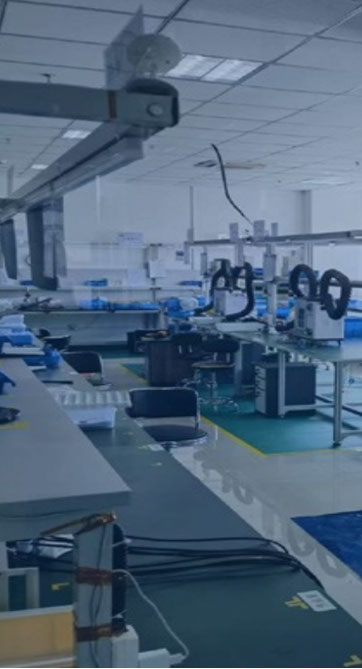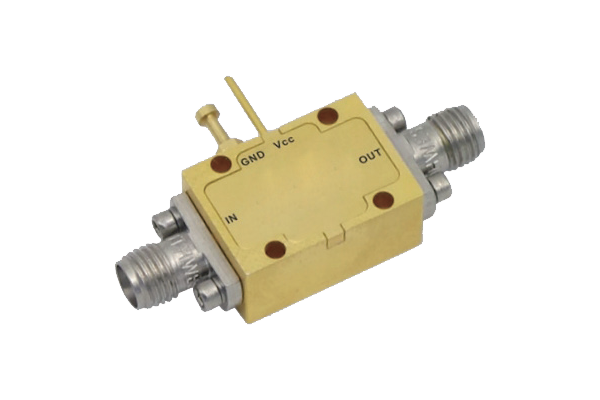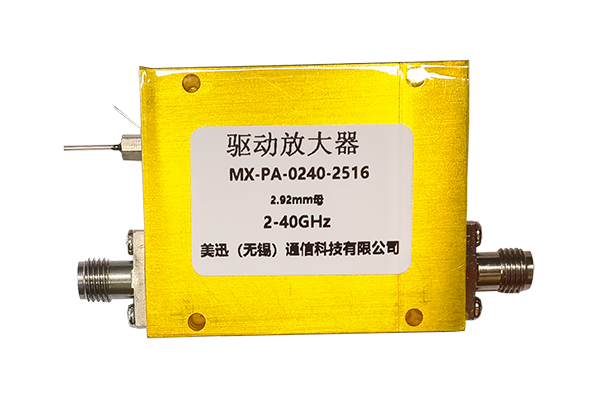
PIN diodes have evolved into key components for microwave and RF applications due to their built-in device properties Their rapid transition between on and off states together with minimal capacitance and low insertion loss suits them for switching modulation and attenuation roles. The basic mechanism behind pin diode switching depends on regulating the device current via an applied bias voltage. That voltage alters the depletion region width in the p n junction thereby changing conductivity. Controlling the bias point makes it possible for PIN diodes to switch at microwave frequencies with low distortion
Precise timing and control requirements often lead to the integration of PIN diodes into intricate circuit designs They are suited to RF filtering arrangements for selective band pass and band stop operations. Their strong signal handling properties make them practical for amplifier power divider and signal generation uses. Miniaturized high-efficiency PIN diodes now find more applications in wireless and radar technologies
Coaxial Switch Architecture and Performance Review
Creating coaxial switches is a challenging task that demands consideration of a variety of technical parameters Switch performance is influenced by factors like the switch type operating frequency and insertion loss characteristics. Minimizing insertion loss and enhancing isolation are primary goals for coaxial switch engineering
To analyze performance one must evaluate metrics such as return loss insertion loss and isolation. Measurements rely on simulation, theoretical models and experimental test setups. Precise performance analysis is essential for guaranteeing dependable coaxial switch function in applications
- Simulations combined with analytic methods and practical experiments are standard for coaxial switch evaluation
- Environmental temperature impedance mismatches and production tolerances can significantly influence switch characteristics
- Cutting-edge developments and emerging trends in switch engineering work to improve performance while shrinking size and reducing power usage
Optimizing Low Noise Amplifier Architectures
Optimizing the LNA’s gain efficiency and operational performance is central to maintaining signal integrity Achieving results demands careful transistor picks optimized bias settings and considered topology design. Sound LNA architectures control noise contributions and support strong low-distortion amplification. Simulation based analysis is critical to understand design impacts on LNA noise performance. Securing a low Noise Figure indicates superior capability to amplify while adding little noise
- Selecting low-noise active devices is central to achieving low overall noise
- Optimal proper and suitable bias conditions are necessary to limit noise generation in transistors
- Topology decisions critically determine how noise propagates in the circuit
Approaches such as matching networks noise suppression and feedback loops help improve LNA behavior
Signal Path Control Using Pin Diodes

Pin diode switches provide a versatile and efficient approach for routing RF signals across applications These devices switch rapidly enabling active dynamic routing of RF paths. PIN diodes’ low insertion loss and good isolation preserve signal quality through switching events. PIN diodes are used in antenna switch matrices duplexers and phased array RF systems
A PIN diode switch’s operation depends on modulating its electrical resistance with a control voltage. In the off deactivated or open state the diode presents a high resistance path blocking signal flow. Applying a forward control voltage lowers the diode’s resistance enabling signal transmission
- Additionally moreover furthermore PIN diode switches offer rapid switching low power consumption and compact size
Various architectures configurations and designs of PIN diode switching networks enable complex routing operations. By networking multiple switches designers can implement dynamic matrices that permit flexible path selections
Coaxial Microwave Switch Assessment and Efficacy

Evaluation and testing of coaxial microwave switches is vital for verifying correct operation in electronic networks. Many factors such as insertion reflection transmission loss isolation switching speed and spectrum range govern switch performance. An exhaustive evaluation procedure measures these parameters across varied operating environmental and test conditions
- Furthermore moreover additionally the evaluation should consider reliability robustness and durability plus the ability to tolerate harsh environmental stresses
- Ultimately comprehensive evaluation outputs provide critical valuable and essential guidance for switch selection design and optimization for targeted uses
Review of Techniques to Reduce Noise in Low Noise Amplifiers
LNAs serve essential roles in wireless RF systems by amplifying weak signals and curbing noise. The review supplies a broad examination analysis and overview of methods to diminish noise in LNAs. We examine explore and discuss primary noise origins such as thermal shot and flicker noise. We examine noise matching feedback loop designs and bias optimization techniques for noise mitigation. It showcases recent advancements such as emerging semiconductor materials and creative circuit concepts that reduce noise figures. Providing comprehensive insight into noise management principles and approaches the article benefits researchers and engineers in RF system development
High Speed Switching Applications for PIN Diodes

PIN diodes have exceptional unique remarkable properties that suit high speed switching applications Low capacitance combined with low resistance produces rapid switching for applications requiring precise timing. In addition PIN diodes display linear voltage response that supports precise amplitude modulation and switching performance. Their adaptable flexible and versatile nature makes them suitable applicable and appropriate for broad high speed applications Use cases cover optical communications microwave circuitry and signal processing devices and equipment
Integrated Circuit Coaxial Switch Circuit Switching Technology
Coaxial switch IC integration provides critical improvements in signal routing processing and handling inside electronic systems circuits and devices. These specialized integrated circuits enable control management and routing of coaxial signals with high frequency performance and low latency insertion times. Miniaturized IC implementations provide compact efficient reliable and robust designs enabling dense interfacing integration and connectivity
- Through careful meticulous and rigorous implementation of these approaches engineers can achieve LNAs with exceptional noise performance supporting sensitive reliable systems Through careful meticulous and rigorous implementation pin diode switch of these approaches engineers can achieve LNAs with exceptional noise performance supporting sensitive reliable systems By carefully meticulously and rigorously applying these approaches designers can realize LNAs with outstanding noise performance enabling sensitive reliable electronic systems By meticulously carefully and rigorously adopting these practices designers can deliver LNAs with excellent noise performance supporting reliable sensitive systems
- Use cases include telecommunications data communications and wireless network infrastructures
- Aerospace defense and industrial automation are key domains for integrated coaxial switch technology
- Consumer electronics A V devices and test measurement apparatus make use of IC coaxial switch technologies
Low Noise Amplifier Design for mmWave Systems

Millimeter wave LNA design must address elevated signal attenuation and stronger effects of intrinsic noise. At millimeter wave ranges parasitics dominate so meticulous layout and selection of components is essential. Minimizing mismatch and maximizing gain remain critical essential and important for mmWave LNA performance. Device selection including HEMTs GaAs MESFETs and InP HBTs plays a decisive role in attaining low noise figures at mmWave. Moreover additionally furthermore the development implementation and tuning of matching networks plays a vital role in ensuring efficient power transfer and impedance match. Paying attention to package parasitics is necessary since they can degrade LNA performance at mmWave. Selecting low-loss transmission paths and optimal ground plane layouts is essential necessary and important for reducing reflection and preserving bandwidth
PIN Diode RF Switching Characterization and Modeling
PIN diodes exist as key components elements and parts in several RF switching applications. Thorough precise and accurate characterization of these devices is essential for designing developing and optimizing reliable high performance circuits. This includes analyzing evaluating and examining their electrical voltage and current characteristics like resistance impedance and conductance. Also characterized are frequency response bandwidth tuning capabilities and switching speed latency response time
Furthermore developing precise models simulations and representations for PIN diodes is crucial essential and vital to forecast performance in complex RF systems. Several diverse modeling approaches exist such as lumped element distributed element and SPICE models. Choosing the right model simulation or representation depends on specific detailed particular application requirements and desired required expected accuracy
High End Approaches for Low Noise Amplifier Design
Developing LNAs involves diligent consideration of circuit topology and components to obtain optimal noise performance. Recent advances in semiconductor tech have unlocked innovative groundbreaking sophisticated LNA design techniques that diminish noise greatly.
Among several numerous numerous these techniques are employing utilizing implementing wideband matching networks incorporating low noise transistors with high intrinsic gain and optimizing biasing scheme strategy approach. Furthermore advanced packaging and thermal control strategies play an essential role in lowering external noise contributions. By rigorously meticulously and carefully implementing these techniques practitioners can achieve LNAs with remarkable noise performance for sensitive reliable electronics
